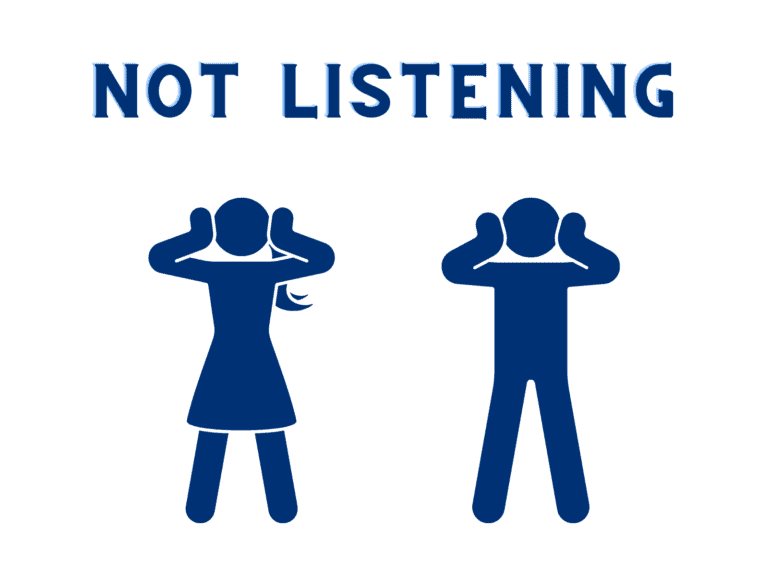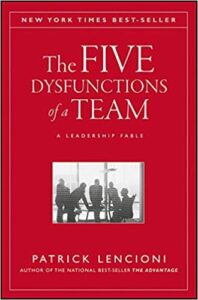How To Be A Bad Leader: 5 Toxic Traits
This post contains affiliate links that help supports this blog and cost you the exact same. If you do not wish to use affiliate links, then feel free to google the product.
We all want to be good leaders, but sometimes we slip up and do harmful things to our team.
It’s easy to get wrapped up in the day-to-day and lose sight of what we’re doing right and, more importantly, what we are doing wrong. And, before you know it, we have fallen into bad habits that are toxic to our team.
While none of us actually want to know How To Be A Bad Leader, these 5 Toxic Traits are all ones I struggle with (more often than I care to admit) and ones you will want to avoid to be a better leader.
1. How To Be A Bad Leader: Micromanaging

Good leadership does not mean micromanaging every move your team makes.
Micromanaging is a negative trait in a leader as it limits the team’s output to the number of projects a single leader can micromanage.
Micromanaging can stifle creativity and innovation, making team members feel like they are not trusted to do their jobs.
Instead of micromanaging, good leaders should allow their team members to take risks and learn from their mistakes.
Good leaders should also tell their team what needs to be done rather than telling them how to do it. By taking this approach, leaders can empower their team members to find the best way to achieve the desired result.
As a result of explaining the what and not micromanaging, the team will be more efficient, effective, and enjoyable.
2. How To Be A Bad Leader: Being Unavailable

There’s a fine line between balancing the leader’s productivity and that of the rest of the team.
Often when the leader is unavailable, it is because they are trying (frantically) to get their own work done. But, this often comes at the significant expense of the team.
Being available for questions and helping others is essential to the development and training of the team. Still, it is frustrating and challenging to get work done if you’re constantly getting interrupted.
One way to strike the right balance is to set regular office hours and rules for communication.
Let your team know when you’re available to answer questions and how you would like them asked; is it a: phone call, slack message, teams call, or an in-person meeting?
Stick to your schedule and rules as much as possible.
You can also use office hours as a time to check in with each member of your team individually. This way, you can offer help and guidance without disrupting your own workflow.
By striking the right balance, you can ensure you’re always accessible when your team needs you and able to get your own work done.
Availability that has worked for me
I have had some success in spending the first 1-2 hours each day working on my number 1 priority and then telling the team to ask their questions on the hour if they have any.
3. How To Be A Bad Leader: Not listening

Listening is an essential skill in any relationship, including work relationships.
When we take the time to listen to someone, it shows that we care about them and their feelings, and at the end of the day, most people want to know that they are cared about.
It can be difficult to listen deeply, especially if we have our own agenda or are under project deadlines.
However, it’s important to resist the urge to interrupt and give the other person our full attention instead. This means making eye contact, using open body language, and not spending the entire conversation with one foot out the door (something I need to improve at).
It is important that we listen to not only what they are saying but what they are not saying. Often there are truths in the things that are not stated.
I have found benefit from understanding why individuals feel the way they do, even if we disagree with them. This helps me better understand their perspective, values, and frustrations.
We can build stronger and more meaningful relationships with our team by listening to them.
4. How To Be A Bad Leader: Making Assumptions Instead of Asking Questions

We’ve all been there before – we see someone doing something that we don’t quite understand, and instead of asking questions, we make assumptions.
Maybe we assume they’re incapable of doing the job properly, or they’re just not trying hard enough.
Either way, making assumptions is rarely a good idea.
By asking questions instead of making assumptions, we can learn about others and better understand their world and beliefs.
We might even find that we have more in common with people than we thought!
5. How To Be A Bad Leader: Being Close Minded

Close-mindedness is another toxic trait of a leader, and it is easy to fall into.
When a leader is close-minded, they are not open to new ideas or suggestions. This can be very harmful to the team, limiting their creativity and problem-solving ability.
Being close-minded is a double edge sword because the leader typically has more knowledge and experience than the team member (especially in smaller companies).
However, a close-minded leader can be challenging to work with and often alienates team members. This can lead to low morale and decreased productivity.
Leaders need to be open to new ideas and suggestions to foster creativity and collaboration within the team. It is more effective for leaders to ask the right questions that spark understanding in the team than to demand a specific solution.
Conclusion on 5 Toxic Traits
If you find yourself doing anything on this list, don’t worry – you are not alone. The first step is acknowledging that there is room for improvement. Luckily, plenty of great resources are out there to help you hone your leadership skills.
Resources
If you want to improve your leadership skills, I suggest reading these books:
The book links are Amazon Affiliate links. These cost you the exact same amount while providing me with a small commission. I greatly appreciate your support. If you do not wish to use affiliate links, feel free to simply google the title.
The 5 Dysfunctions of a Team by Patrick Lencioni (see my book summary here) or
The Dichotomy of Leadership by Jocko Willink.
By avoiding these common pitfalls and following the advice in these books, you will be well on your way to becoming a more effective leader.







